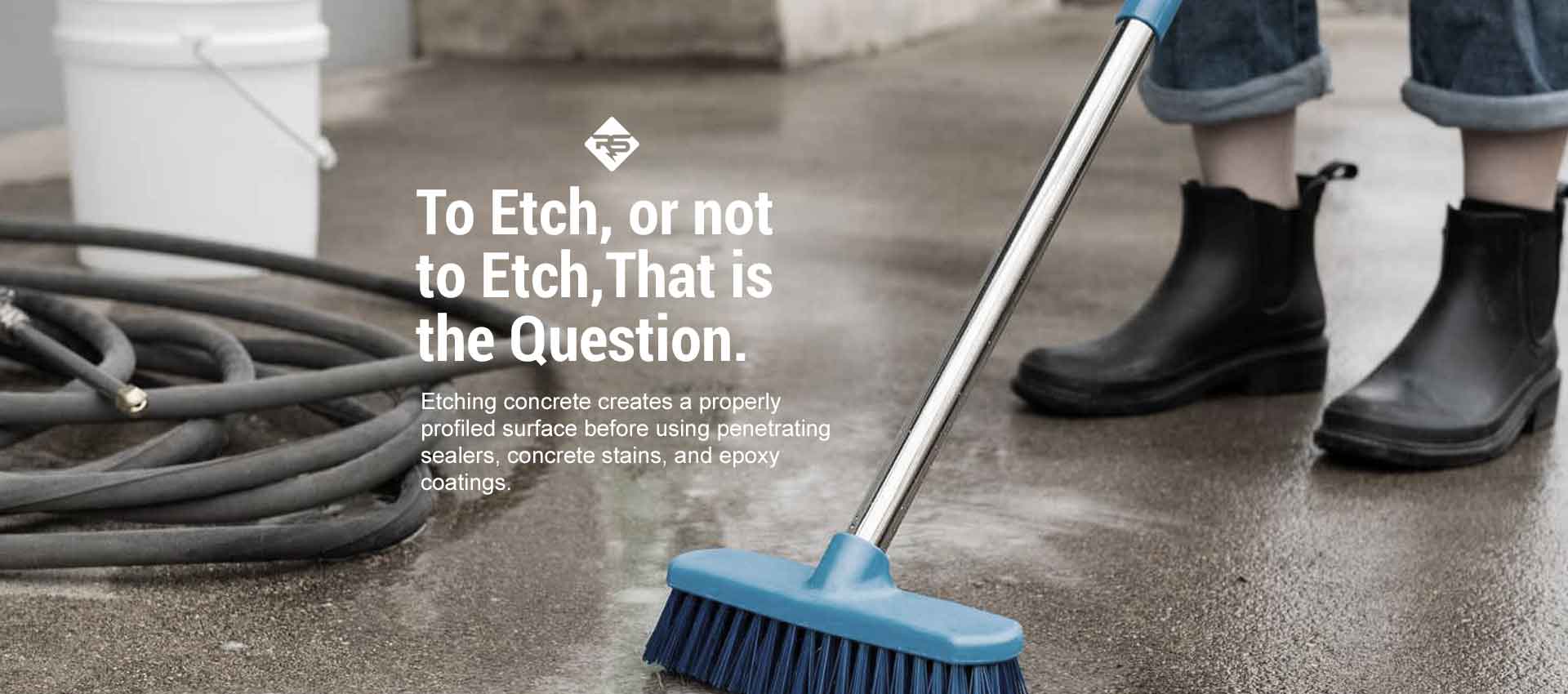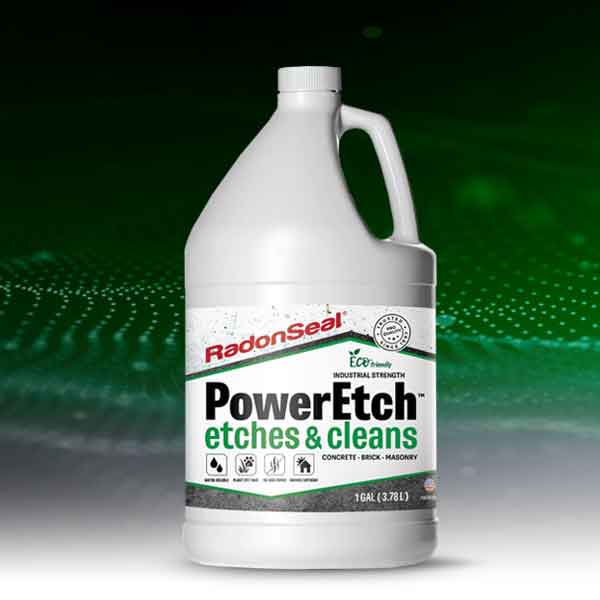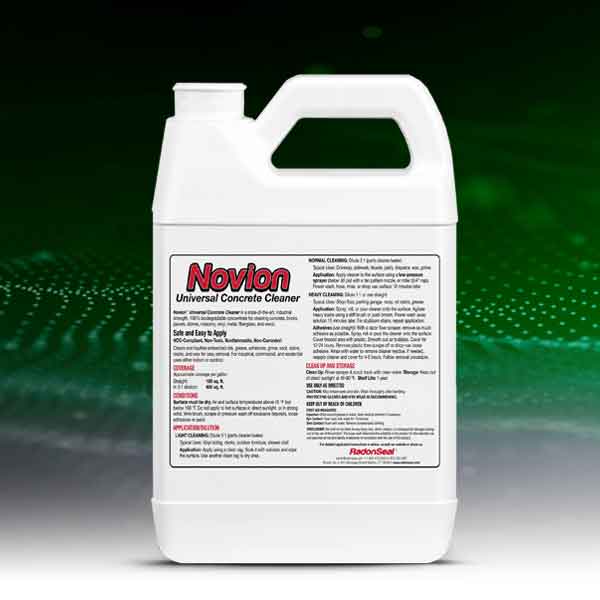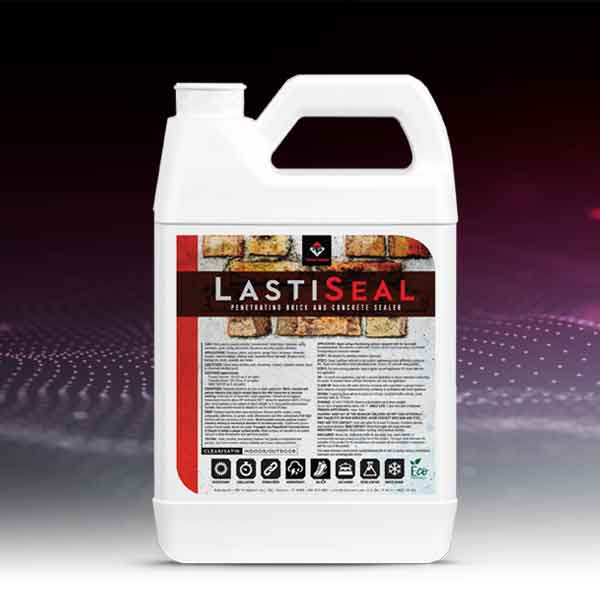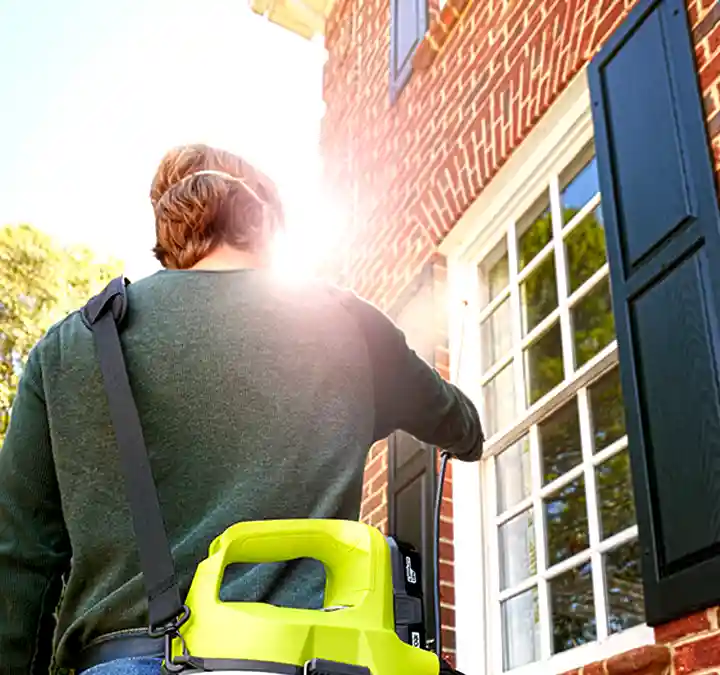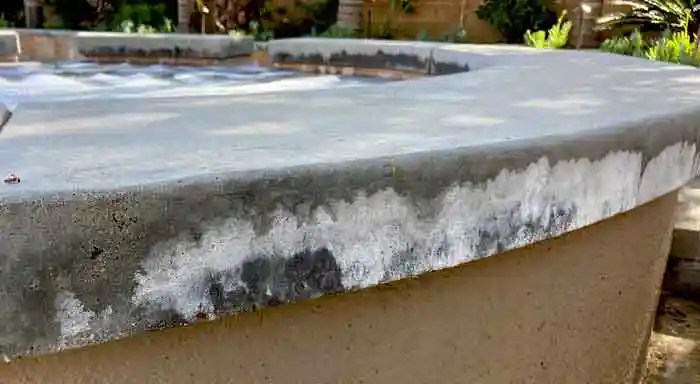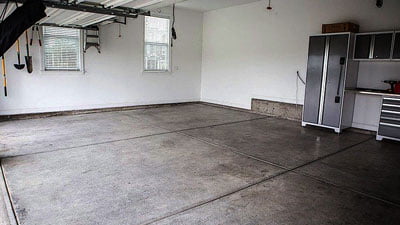Concrete etching is a vital process for preparing a concrete surface for treatments such as sealers, paints, stains, or epoxy and urethane coatings. When done properly, etching concrete concrete increases surface porosity and adds profile. A porous, rough, profile is key to success when it comes to sealers and decorative concrete coatings. In fact, surface porosity may be the most important (and most often overlooked) factor to the success of your project. However, many homeowners and contractors question whether concrete etching is truly necessary or if it is just an added expense.
Lets take a closer look at how you can determine if your concrete surface needs to be etched.
Why Concrete Etching is Important
When it comes to using a penetrating sealer, porosity is king. Penetrating sealers soak into the concrete, in some cases several inches, to fill the pores and capillaries deep inside. If the concrete surface is not sufficiently porous enough, the sealer cannot penetrate. If the sealer cannot penetrate, the sealer won’t work.
Surface coatings, like concrete paints, epoxy, clear acrylic, and clear urethane, must be applied to porous, and rougher concrete surfaces to ensure a strong bond (think sanding a wooden chair before painting). Similarly, flooring adhesives cannot form a reliable bond, and drying times are significantly delayed when they are used on smooth, non-porous concrete. In fact, delamination caused by poor adhesion is the most common reason for flooring failure.
So how does one determine if a concrete slab is porous enough?
Surface Finish Matters
Concrete is naturally porous. Invisible pores, which constitute 20% or more of the concrete itself, are formed as batch water evaporates from the concrete during the initial drying process. These capillary pores allow water vapor, liquid water, and soil gases, like radon, to pass through quite easily. If you happen to own one of the 65% of houses that have a moisture problem, you can certainly attest to this.
It may seem reasonable to conclude that water movement through the concrete from the “negative side” (underneath or behind) is an indicator that the floor is porous on the surface. However, this is not always the case. As moisture accumulates underneath a concrete slab or outside a basement foundation wall, significant pressure builds, and the water is actually “pushed” through the concrete. Products applied to the “positive side” or surface of the concrete do not enjoy the benefit of high pressure and instead must rely on natural capillary suction.
Interior Concrete Slabs
If you are working on interior concrete floors (i.e. garages, basements), you will likely be working on concrete that has a smooth, almost shiny surface. A smooth finish is typically produced using a mechanical trowel, polisher, or hand trowel. These surfaces tend to be very “tight” and much less porous than those that are finished with a rougher surface profile. Think of the smooth finish as a layer of protective skin. In order to get sealers into the pores, the skin must be opened or removed. Concrete etching helps to remove the smooth skin and open the pores. Keep in mind, that not all smooth finished concrete requires acid etching, but a proper determination of the surface porosity must be done before sealers, adhesives, or other coatings are applied.
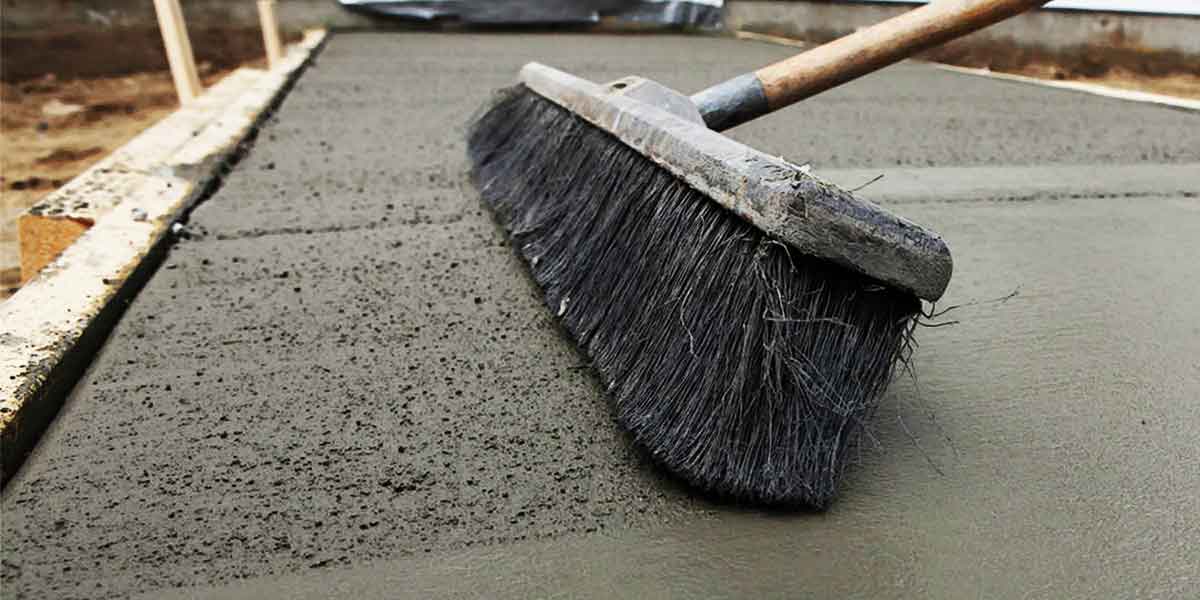
Broom finished concrete is rough and typically porous
Outdoor Concrete Slabs
If you are sealing your concrete driveway, sidewalk, or patio, it likely has a rough, broom-finished surface. This is done to add traction and prevent the surface from becoming slippery when wet.
Broom-finished concrete is typically considered porous unless: 1) the concrete has been previously sealed, or 2) stains, efflorescence, or other contaminants prevent proper sealer penetration. If this is the case, a thorough cleaning is needed, and concrete etching would not likely be necessary.
Our Universal Concrete Cleaner is an excellent all-purpose cleaner to remove dirt, algae & mold, latex/acrylic paints, tree sap, leaf stains, and even oil stains.
PowerEtch™ Concrete Etcher & Cleaner
Powerful yet safe concrete etcher and cleaner. PowerEtch Concrete Etcher & Cleaner makes cleaning and profiling concrete a breeze.
Product Info
Buy Direct
Get It on Amazon
Universal Concrete Cleaner & Degreaser
Concentrated, multipurpose concrete cleaner and degreaser. Biodegradable, nontoxic, nonabrasive, and nonflammable.
Product Info
Buy Direct
Available Soon on Amazon
LastiSeal Brick & Concrete Sealer | Flat
Penetrating sealer that waterproofs and strengthens concrete, brick, pavers, and porous stone. Leaves a natural appearance on the surface.
Product Info
Buy Direct
Get It on Amazon
Testing Porosity
Measuring concrete surface porosity can be done using the Water Drop Test or Eye Dropper Test. This test is discussed in ASTM F 3191-16 Standard Practice for Field Determination of Substrate Water Absorption (Porosity) for Substrates to Receive Resilient Flooring. The test itself is quite basic and easy to perform.
-
- Get an eyedropper from a drugstore (costs about a quarter), fill it with water, add a drop of liquid soap (to break surface tension), and shake.
- Evenly distribute a dozen drops on the surface for every 1,000 sq. ft. of concrete.
- If the solution is absorbed into the concrete in less than a minute, the concrete can be considered porous
- Beading of water on the surface likely means the floor is not porous enough
- If the concrete slowly absorbs water and leaves a wet spot larger than a dime, the floor is moderately porous. In this case, a concrete etching solution should be considered.
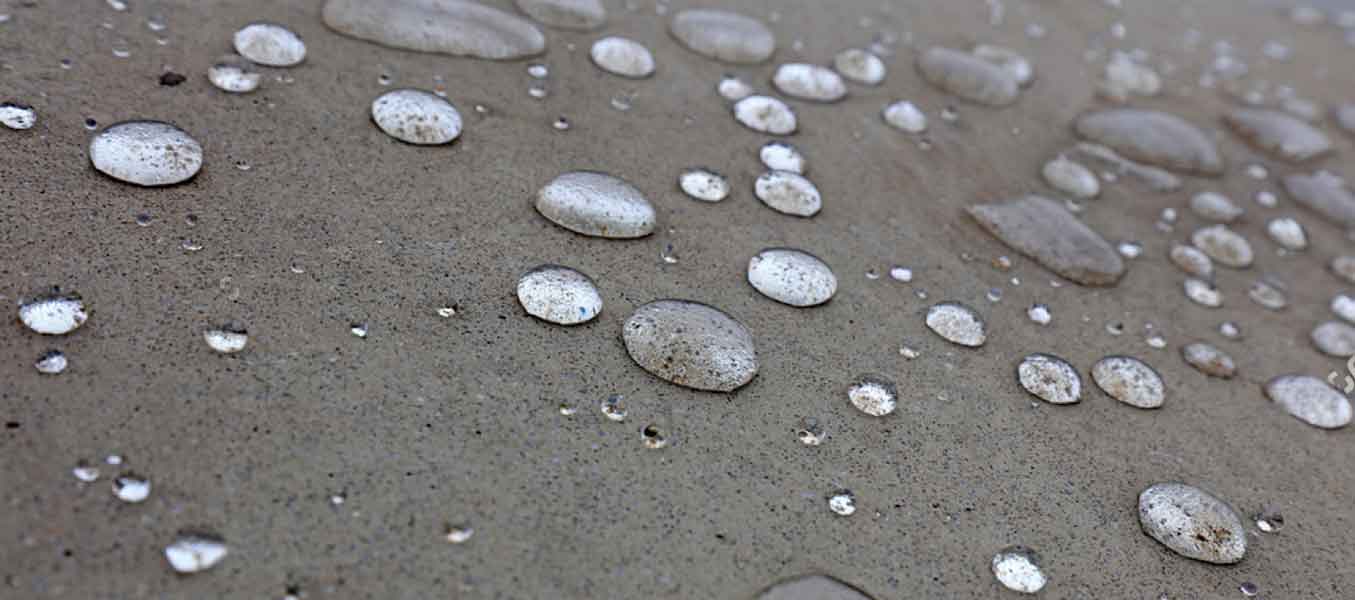
Is the concrete surface porous enough? Smooth-troweled concrete surfaces can be too tight to apply penetrating sealers.
Product Test
Perhaps the most reliable way to check the porosity of a concrete slab is to conduct a test application with the product you intend to use. Sampling should be done in more than one location, or at least one test per individual concrete slab if different slabs will be treated. Surfaces should be properly cleaned and allowed to thoroughly dry. For penetrating sealers, the sealer should be applied to the test area(s) and proper penetration should be verified. Keep an eye out for pooling and puddling. Allow the sealer to dry and check the area for a film, haze, or discoloration – all signs that the sealer has not penetrated properly. You can purchase a small bottle of LastiSeal Brick & Concrete Sealer for testing purposes.
Concrete etchers can play an important role when it comes to preparing concrete for a penetrating sealer. They work by chemically reacting with concrete to produce a more porous surface. Increasing the concrete porosity will result in better sealer penetration. Simply put, more porous concrete will absorb more sealer.
*Learn more about acid etching concrete, and most advanced and effective concrete etcher available: PowerEtch Concrete Etcher & Cleaner
